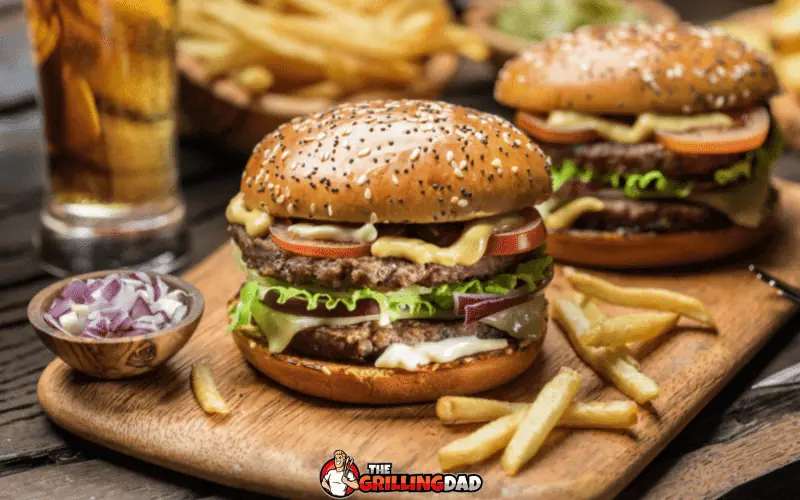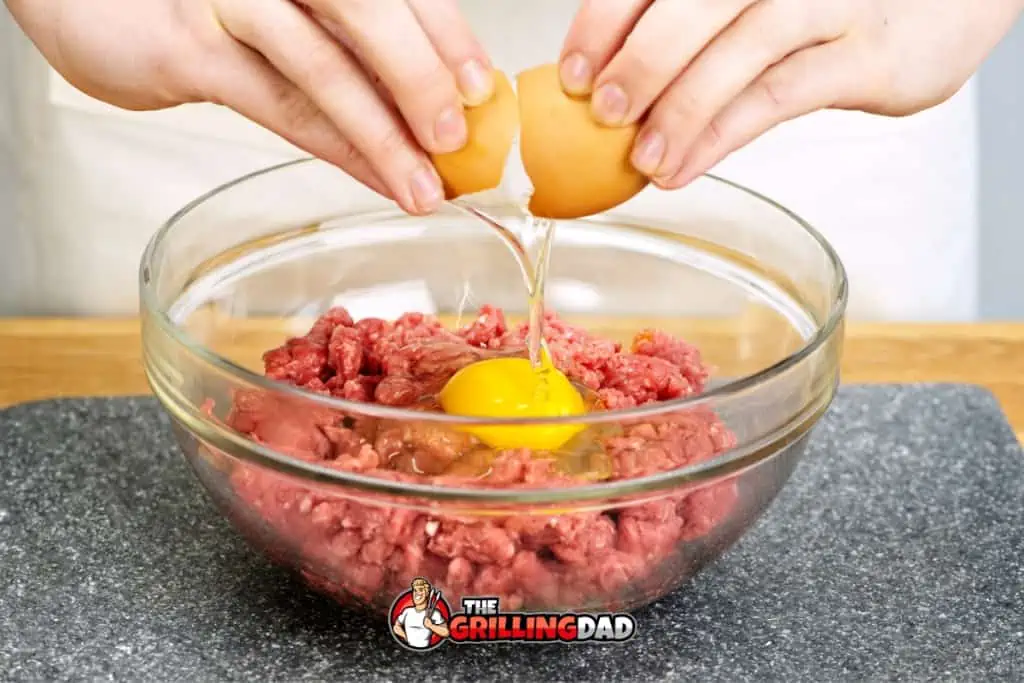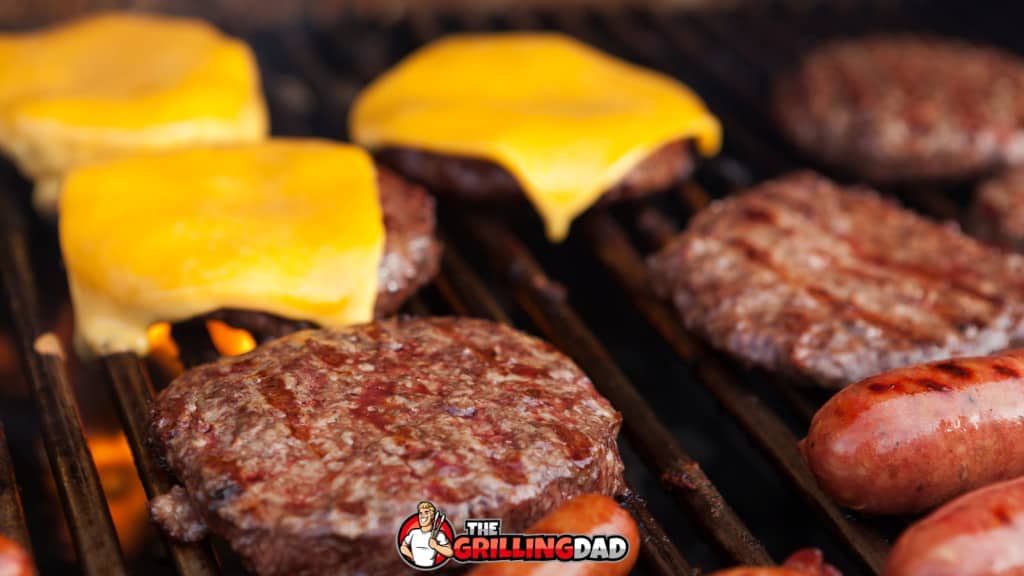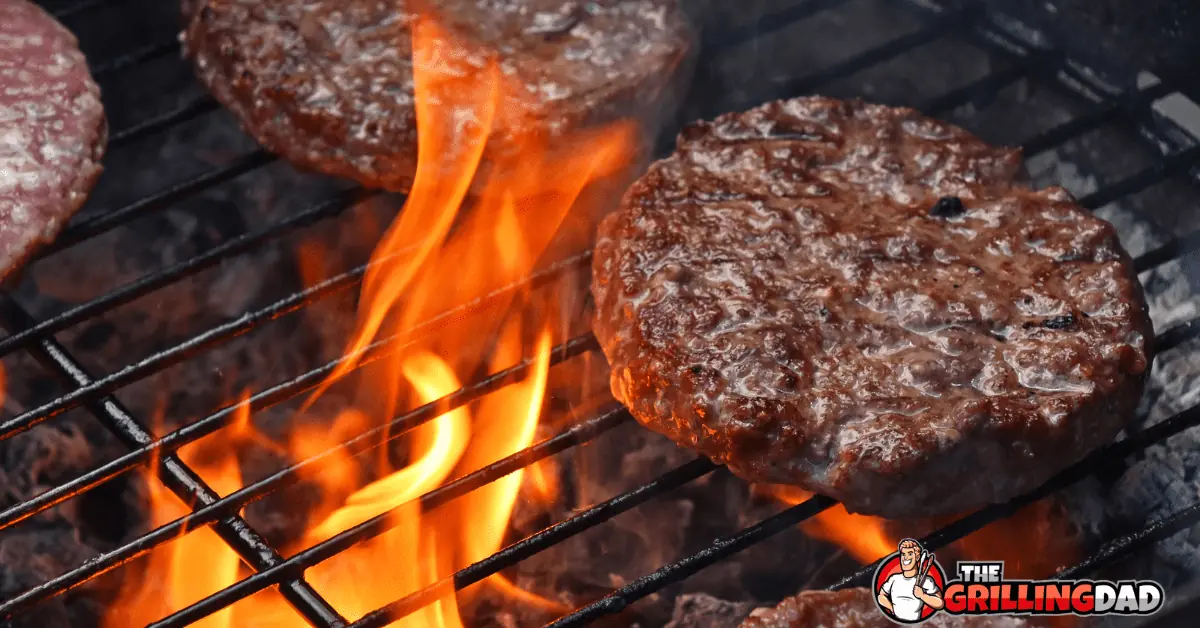Is there anything more frustrating than firing up the grill, slapping down a beautiful burger patty, and then watching it crumble apart right through the grill grates? I feel your pain.
That’s why I wanted to relish the opportunity to share the techniques I’ve learned over the last 2 decades for stopping your hamburger patties from falling apart.
Let me set your mind at cheese. I’m going to cover the secrets behind selecting the right meat, the art of forming patties, and techniques to handle and cook them with care. Let’s dig in!
Jump to Section
14 Tips for Keeping Your Hamburger Patties Together
Here are the best tips for making sure your burger patties don’t fall apart:
- Watch the fat
- Don’t go too finely ground
- Don’t overwork the meat
- Add binders
- Watch the size and thickness
- Make an indentation in the center
- Grill with high heat
- Flip only once in a skillet
- Try baking them
- Don’t Salt Right Away Without Binder
- Keep Equipment Cold When Forming
- Mix and Match Binding Techniques
- Separate with Butcher Paper When Stacking
- Let Patties Rest Before Serving
Choosing the Right Ground Beef
Unlike grilling frozen burgers, when you’re making your own hamburger patties, choosing the right ground beef is crucial if you don’t want them falling apart. Here are a few things to consider:
1. Watch the Fat
The fat content of your ground beef is important for the texture and flavor of your burgers. Too little fat and your burgers will be dry and crumbly, while too much fat can cause them to fall apart on the grill.
I recommend choosing ground beef that is 80% lean and 20% fat. This will give your burgers enough fat to stay moist and hold together, without being too greasy.
Related >> Exploring the Basics: What Exactly is 80/20 Ground Beef?
2. Don’t Go Too Finely Ground
The size of the grind also affects the texture of your burgers. Coarsely ground beef will give your burgers a more rustic texture, while finely ground beef will result in a smoother, more uniform patty.
Related >> Best Meat Grinders
For burgers that hold together well, I recommend using beef that is coarsely ground. This will give your burgers a slightly chunky texture, which helps them hold their shape on the grill.

Mixing the Ingredients
When it comes to making hamburger patties, mixing the ingredients is an important step that can make or break the final product. Here are a few tips that I’ve found helpful:
3. Don’t Overwork the Meat
One of the biggest mistakes people make when mixing their hamburger patties is overworking the meat. When you handle the meat too much, it can become tough and dry, and the patties will fall apart more easily.
To avoid this, work with cold meat and mix in your ingredients gently with a soft touch. That means don’t knead or squeeze the meat too much.
Related >> How Long Can Hamburger Sit Out?
4. Add Binders
Another way to keep your hamburger patties from falling apart is to add binders. Binders are ingredients that help hold the meat together and keep it from crumbling.
There are a few different binders you can use, but my personal favorite is an egg.
Adding an egg to your mixture will act as a binder and help keep your patties together. You can use the whole egg or just the egg white, depending on your preference.
Another option is to use breadcrumbs or oats as a binder. Just be careful not to add too much, or your patties may end up dry and crumbly, which is what we’re trying to avoid.

Binder 1: Raw Egg
Raw egg is an amazing binding ingredient, and it’s simple to use. As you are preparing your ground beef for the hamburger press, simply add a raw egg (or two, depending on how many burgers you are making) into the bowl with the spices.
Mix it with the hamburger meat (using your hands), and by the time it is mixed, you’ll find the hamburger meat sticking to itself as well as your hands!
Binder 2: Bread Crumbs
Bread crumbs in another great binding agent, and many chefs even swear that they can make juicier burgers! The only problem with breadcrumbs is that they take a traditionally gluten-free food and add gluten.
But if you don’t have anyone in your family with a gluten allergy, grab a container of regular or Italian bread crumbs and add half a cup to your raw beef and mix it with your hands. You can add more as needed. You can also use gluten-free breadcrumbs, but these won’t help much with the binding problem in our experience.
Binder 3: Flax Seeds
Flax seeds are also great at keeping foods together (most notably baked goods), but they can work in your burgers too. When you add flax seeds to your raw ground beef, ensure you add 3 teaspoons of warm water as well.
If you are worried about changing the flavor of your ground beef, don’t worry too much, as you only need about one tablespoon of flax seeds (with the aforementioned water) to bind a pound of ground beef’s worth of burgers.
Method 4: Cheese
This last binder is a bit unconventional, but it works. We recommend using shredded cheddar cheese for the best results.
Meat relies on a source of protein and fat to bind. Adding a cup of cheddar cheese to your ground meat should help keep the burgers together, not to mention add a delicious cheese flavor to your burgers.
This is one of the few methods we listed that will change the taste of your burgers, so we recommended experimenting with just a few of your burger batches to ensure you enjoy the flavor before you make a large amount of these cheesy burgers. We also recommend cooking these burgers on foil or another protectant sheet, as the cheese in these burgers can make your grill a bit messy!
Forming the Patties
When it comes to shaping hamburger patties, there are a few things you can do to make sure they don’t fall apart on the grill. Here are some tips:
5. Watch the Size and Thickness
Make sure your patties are the right size and thickness. I recommend using about 4-6 ounces of ground beef to make an average size patty. You can adjust the size to your preference, but keep in mind that larger patties may be more difficult to cook evenly.
As for thickness, aim for patties that are about 1/2 to 3/4 inches thick. This will help them cook through without falling apart.
Related >> Here’s How Much Hamburger Meat To Use Per Person

6. Make an Indentation in the Center
After you’ve formed the burgers, make an indentation in the center of each patty. This might seem counterintuitive, but it actually helps the patties cook more evenly and prevents them from puffing up in the middle.
To make the indentation, use your thumb to press down lightly in the center of each patty. Don’t press too hard or you’ll create a hole that goes all the way through the patty.
After making the indentation, I like to shape the edges of the patty so they’re slightly thicker than the center. This helps the patty cook more evenly and stay juicy.
Related >> How To Use a Hamburger Press
Cooking the Patties
7. Grill with High Heat
Grilling is one of the most popular ways to cook hamburger patties. I like to grill mine with high heat. Here’s how:
- Preheat the grill to around 450°F
- Brush the grates with oil to prevent sticking
- Place the patties on the grill and cook for 3-4 minutes per side, flipping only once
- Avoid pressing down on the patties with a spatula, as this can cause them to lose their juices and become dry.
- Use a meat thermometer to ensure that the internal temperature of the burger reaches 160°F before removing them from the grill.
Related >> How Long Does it Take To Grill Burgers?
8. Flip Only Once in a Skillet
Pan-frying is a great option if you don’t have access to a grill or you just want an excuse to use your cast iron skillet.
- Heat a tablespoon of oil in a skillet over medium-high heat.
- Place the patties in the skillet and cook for 3-4 minutes per side, flipping only once.
- Grab your meat thermometer and start assembling your burger when it hits 160°F.
Related >> How To Drain Hamburger Grease
9. Consider Baking Them
Baking is a good option if you want to cook multiple patties at once without pulling the grill out.
- Preheat the oven to 400°F.
- Place the patties on a baking sheet lined with parchment paper.
- Bake for 15-20 minutes, or until the internal temp reaches 160°F.
Regardless of the cooking method you choose, it’s important to remember not to overcook your burgers. Overcooking can cause them to become dry and tough, which can make them fall apart.
I know I’ve mentioned it a few times, but be careful with the internal temperature of burgers.
More Hamburger Patty Tips
10. Don’t Salt Immediately
While we do recommend seasoning your burgers, salt can sometimes lower how well burger meat can bind, especially if it is lean. If you aren’t using an egg or breadcrumbs, then you might want to wait to salt your burgers until later.
11. Form Burgers on Cold Equipment
This may seem a bit silly, but when your burgers are held together by cheese (or you are trying the non-additive method), then you want to make sure all your equipment is cold as you form the burgers. This will keep the natural fat from melting as you work.
Form your burgers on a cold metal press or pan (you can even place it in the fridge before using) and avoid working directly over a stove or oven where the ambient heat may affect your burger-forming process.
12. Mix and Match Binders
Not sure which binding method to use? The favorite in our home is the cheese and the egg method. Not only do we toss in an egg, but also half a cup of cheddar or blue cheese.
We love the taste, and it saves us from having to add cheese to the patties later. The egg keeps everything together and really gives the burgers a nice crust. We highly recommend you mix and match methods to find what you like!
13. Don’t Stack the Burgers
While you want your burgers to stick in their burger shape, the last thing you want them to do is to stick to one another! As you form your burgers, place them flat on butcher paper so you can place them in your fridge with ease.
We don’t recommend stacking your homemade burgers as you would frozen ones–this doesn’t usually have very good results.
14. Let the Burger Patties Rest Before Serving
After you’ve cooked your burgers to perfection, resist the urge to slap them right on a bun. Instead, take a minute to let the patties rest off direct heat for 5-10 minutes before serving.
This rest time allows the juices inside the patty to redistribute so they reabsorb throughout the meat rather than run right out onto your plate. It also gives the proteins time to relax after cooking so the patties don’t get tough and dry.
Letting your patties rest helps lock in moisture and flavor for a more tender, juicy burger experience. You’ve worked hard to keep those patties in tip-top shape – don’t undo it all by not resting them properly!
A short rest truly takes your burgers from great to next-level amazing.
Want More Burger Tips?
Here are a few more pieces we’ve written about burgers. If you couldn’t tell, I like talking about them just as much as I like eating them!




